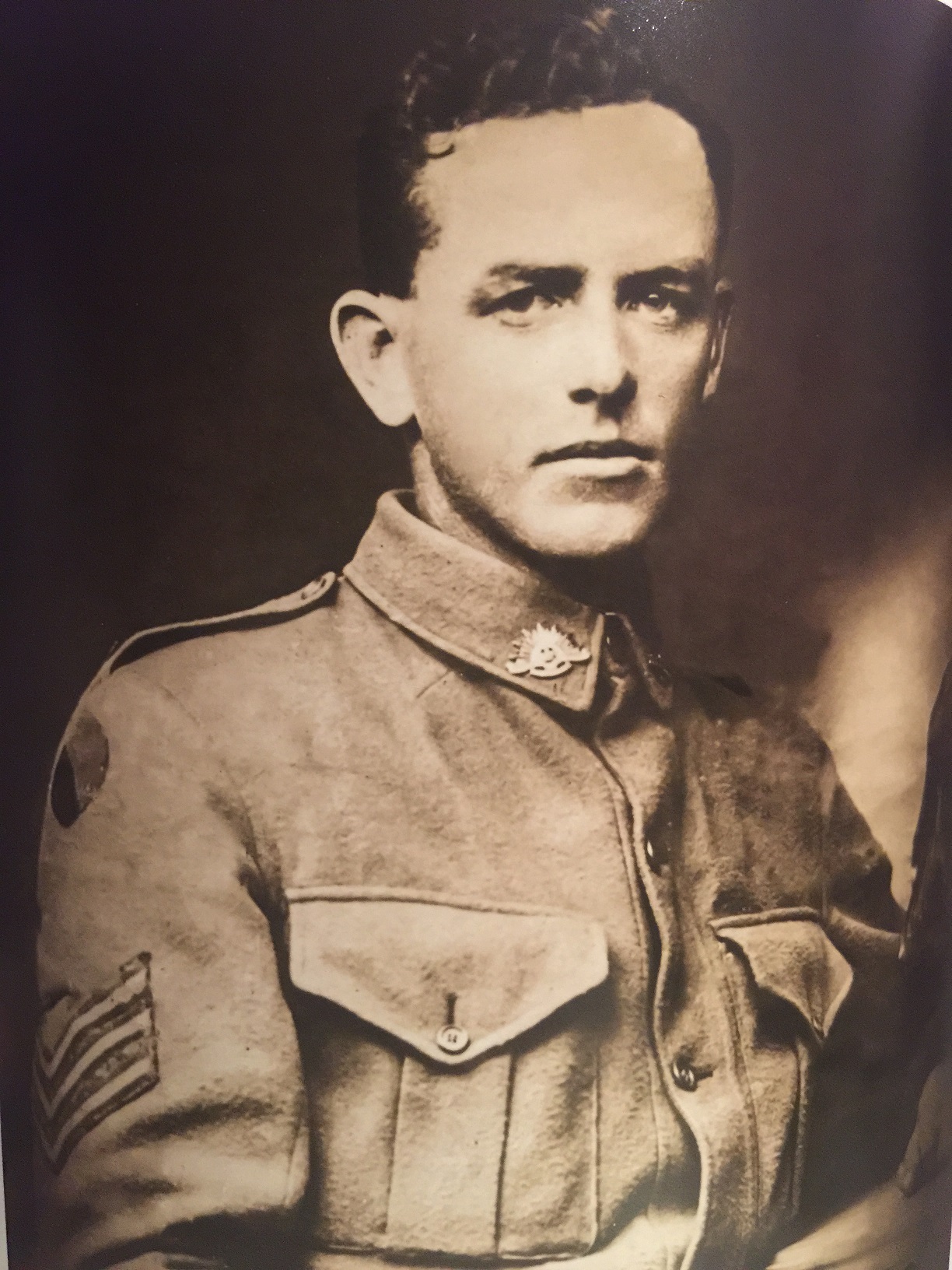FAR. Sgt.
John Wynd
Informations sur naissance
|
Année de naissance: 1894 |
|
Lieu de naissance: Rockhampton, Queensland, Australia |
Informations générales
|
Profession: Forgeron |
Informations service militaire
|
Pays: Australia |
|
Force armée: Australian Imperial Force |
|
Rang: Farrier-Sergeant |
|
Numéro de service: 772 |
|
Incorporation date: 19/08/1914 |
|
Incorporation nom de lieu: Rockhampton, Queensland, Australia |
|
Unités: — Australian Field Artillery, 11th Bde. (Dernière unité connue) |
Informations sur décès
|
Date de décès: 20/10/1917 |
|
Lieu de décès: Broodseinde, Zonnebeke, Belgique |
|
Cause du décès: Killed in action (K.I.A.) |
|
Âge: 23 |
Distinctions et médailles 3
|
1914-15 Star Médaille |
|
British War Medal Médaille |
|
Victory Medal Médaille |
Points d'intérêt 3
| #1 | Lieu de naissance | ||
| #2 | Lieu d'enrôlement | ||
| #3 | Lieu du décès (approximatif) |
Mon histoire
Farrier-Sergeant John Wynd served in the Australian Field Artillery 11th Brigade, part of the Divisional Royal Artillery of the 4th Australian Division. As a Farrier-Sergeant John Wynd looked after the horses of the Artillery Brigade. He was responsible for the shoeing of the horses. He would have had four Shoeing Smiths (of which 1 would be a Corporal) beneath him.
The Australian Field Artillery 11th Brigade already participated in the Battle of Broodseinde on the 4th and the Battle of Poelcapelle on the 9th of October 1917.
The bad weather and the destruction of the irrigation streams between the fields, due to the relentless shelling, had turned the terrain in a bog. The moving of the guns through the sticky mud proved to be a very strenuous task, exhausting men and horses alike. On the 11th the guns of the Australian Field Artillery 11th Brigade were moved forward. The batteries took up positions near the hamlet of Broodseinde. They were to support the attack of the 4th Australian Division during the First Battle of Passchendaele on the 12th of October 1917. But the First Battle of Passchedaele was unsuccessful and the advance came to a standstill. The Australian Field Artillery 11th Brigade remained at their positions near Broodseinde.
On the 20th of October 1917 the guns were putting down harassing fire on German roads and approaches and engaged several German batteries. The German artillery had been active throughout the day and responded to the Australian fire. Consequently the 42nd and 43rd Battery of the Australian Field Artillery 11th Brigade were heavily shelled. According to the War Diary the German shelling killed one other rank on the 20th of October 1917. It’s highly likely this was Farrier-Sergeant John Wynd, who was killed on the 20th of October 1917. His remains were never recovered and John Wynd is remembered on the Ypres (Menin Gate) Memorial.
The Australian Field Artillery 11th Brigade already participated in the Battle of Broodseinde on the 4th and the Battle of Poelcapelle on the 9th of October 1917.
The bad weather and the destruction of the irrigation streams between the fields, due to the relentless shelling, had turned the terrain in a bog. The moving of the guns through the sticky mud proved to be a very strenuous task, exhausting men and horses alike. On the 11th the guns of the Australian Field Artillery 11th Brigade were moved forward. The batteries took up positions near the hamlet of Broodseinde. They were to support the attack of the 4th Australian Division during the First Battle of Passchendaele on the 12th of October 1917. But the First Battle of Passchedaele was unsuccessful and the advance came to a standstill. The Australian Field Artillery 11th Brigade remained at their positions near Broodseinde.
On the 20th of October 1917 the guns were putting down harassing fire on German roads and approaches and engaged several German batteries. The German artillery had been active throughout the day and responded to the Australian fire. Consequently the 42nd and 43rd Battery of the Australian Field Artillery 11th Brigade were heavily shelled. According to the War Diary the German shelling killed one other rank on the 20th of October 1917. It’s highly likely this was Farrier-Sergeant John Wynd, who was killed on the 20th of October 1917. His remains were never recovered and John Wynd is remembered on the Ypres (Menin Gate) Memorial.
Sources 2
|
First Australian Imperial Force Personnel Dossiers, 1914-1920, (National Archives of Australia, Canberra (NAA), B2455, WYND J). https://recordsearch.naa.gov.au/SearchNRetrieve/Interface/SearchScreens/NameSearch.aspx. Sources utilisées |
|
HQ 11th Australian Field Artillery Brigade, (Australian War Memorial, Campbell (AWM), AWM4 13/38/21). https://www.awm.gov.au/collection/C1338583 Sources utilisées |
Complément d’informations 4
|
Commonwealth War Graves Commission Database https://www.cwgc.org/find-records/find-war-dead/casualty-details/1602159 |
|
Namenlijst (In Flanders Fields Museum) https://namenlijst.org/publicsearch/#/person/_id=ae366584-3acc-4562-a85a-42b6deb59cf0 |
|
Lives of the First World War (Imperial War Museum) https://livesofthefirstworldwar.iwm.org.uk/lifestory/7404205 |
|
The AIF Project (UNSW Canberra) https://aif.adfa.edu.au/showPerson?pid=333816 |
